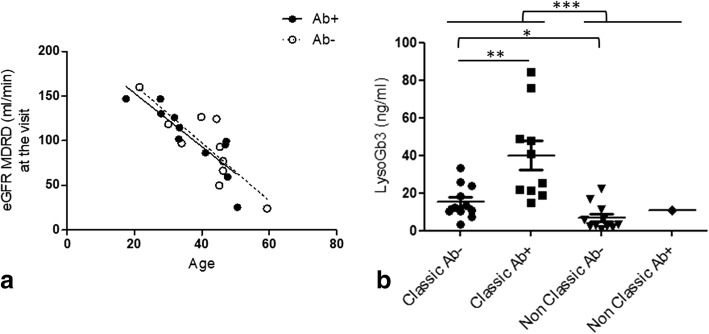Fig. 3.
a Distribution and linear regression of the estimated glomerular filtration rates of classic patients over the age according to the antibody status; antibody-positive patients: slope − 3.0 ml/min/y, r2 = 0.75, p < 0.001) vs antibody-negative patients (slope − 3.3, r2 = 0.71, p = 0.002; no difference between curves, p = 0.79); b The lysoGb3 plasma levels in men currently treated with agalsidase according to their phenotype and antibody status. The lysoGb3 levels are higher in classic patients (median 21.1 ng/ml [IQR 11.6–37.2] (n = 21) vs 4.5 ng/ml [IQR 2.3–11.3] (n = 12), Mann-Whitney test, p = 0.0005). This difference is confirmed when considering antibody-negative patients only (median 12.5 ng/ml in classic patients (n = 11) vs 3.2 ng/ml in non-classic patients (n = 11); p = 0.01). Among classic patients only, the lysoGb3 levels are higher in antibody-positive patients (Mann Whitney test, median 33.2 ng/ml [IQR 20.6–55.6] vs 12.5 [10.1–24.0], p = 0.005) despite the lack of difference in the time of exposure to agalsidase (Mann Whitney test, median 11.2 y [IQR 4.8–13.1] vs 5.9 [4.0–14.1] p = 0.81; data not shown)

